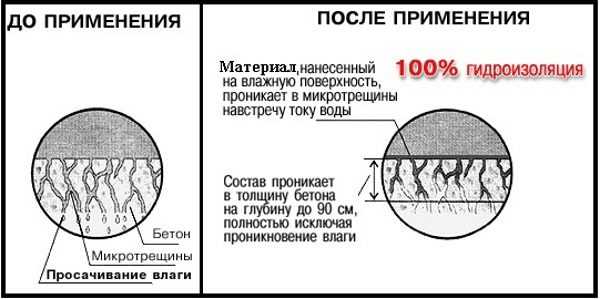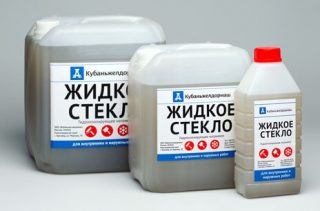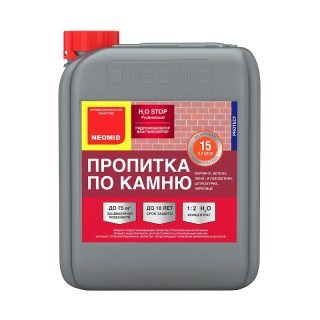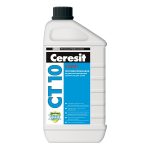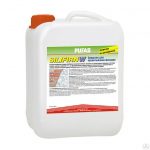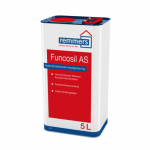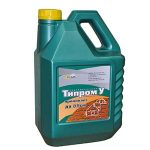Porous aerated concrete absorbs moisture, which deteriorates its properties. Water penetrates inside, therefore protection from cold decreases, bacteria develop. When freezing, the liquid expands, breaking the structure of the material. Water repellent for aerated concrete is applied outside, the substance forms a waterproof film. The coating closes the pores, does not allow the ingress of liquid into the concrete.
Protection of concrete blocks from moisture
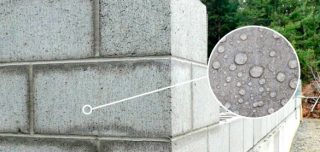
The waterproofing property of protective compounds is based on reactions of chemical components with calcium in the cement inside the pores.
Under the action of a waterproofing agent processes occur inside aerated concrete:
- calcites change their structure, quickly settle on the inner walls of the pores;
- the dimensions of the voids become smaller.
Supplements usually include alkaline earth and alkali metal salts, apply polymeric substances.
Hydrophobic solutions safe for health, do not react to temperature changes, precipitation, ultraviolet radiation.
The external agent applied to the surface penetrates deep into the porous concrete through communicating capillaries with the liquid, which is gradually pushed out. The processed material when tested shows increase in water resistance index even if you delete the superimposed layer.
Main classification and processing methods
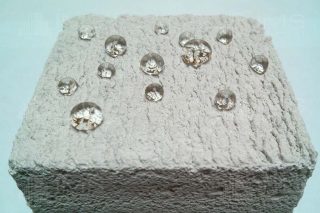
During construction use more than 100 varieties of liquid formulations for waterproofing aerated concrete blocks.
They are divided taking into account the characteristics:
- method of application;
- state of aggregation;
- the basis on which the product is made.
The choice of application method depends on the conditions of use, climate and even the price of the composition. The latter indicator has a significant effect if large planes are processed.
There are three main methods of application:
- protection of aerated concrete from moisture outside;
- hydrophobization in volume (during production);
- combined option.

The action of the water repellent
The product impregnates the top layer and deeply penetrating... Aerated concrete becomes waterproof, while retaining the ability to penetrate steam.
Impregnation for aerated concrete has action on material:
- increases resistance to external temperature changes;
- prevents freezing of capillary liquid molecules in pores;
- increases strength, minimizes damage;
- reduces the effect and spread of corrosion;
- reduces the risk of efflorescence on the surface.
Processed materials should not be tiled, stone, or plastering, as water-based mortar will not adhere to them. The positive is that graffiti drawings, which are often made with acrylic, latex, water-based paint, cannot be applied to the surface.
Types of water repellents
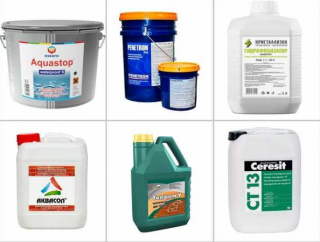
Compositions for waterproofing aerated concrete from the outside produce in the form of dry powder, liquid and pastes... The first and last options are bred before use, and the second is ready for use.The purpose of the drug, the manufacturer, the recommendations for application matters.
Choose a remedy taking into account the conditions:
- get effective protection from dampness;
- do not spoil the appearance of the structure.
Regardless of the processing method, the main factor influencing the choice is type of basewhich happens silicate and water.
Water based formulations
It is possible to effectively protect aerated concrete from moisture if aqueous solutions are used. They improve the appearance, are easy to apply, and belong to the category of environmentally friendly impregnations. For aerated concrete, there are special means for moisture, which are used specifically for this material.
Popular is waterproofing of penetrating action GKZh-11N... Water emulsion of organosilicon polymer sodium methylsiliconate penetrates into the mass, settles in it as a result of interaction with atmospheric carbon dioxide. Increases frost resistance and water resistance.
Silicone based products
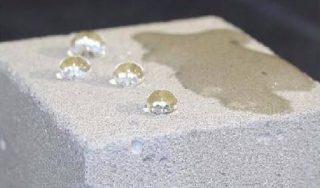
Experts classify drugs in this category as the most effective formulations... Aerated concrete blocks outside can be treated with such solutions from moisture and used for other materials.
After curing the film:
- extends the service life of structures;
- reduces the likelihood of the appearance and development of mold, fungi;
- reduces heat transfer;
- reduces sensitivity to frost.
The effectiveness will be higher if the product is applied to a dry, dust-free surface. The film does not impede the passage of steam.
Using liquid glass
The agent is applied until the aerated concrete absorbs the liquid glass. The product sets quickly, but fully gains properties after 24 hours... The result is a water-repellent coating with good protection characteristics.
Five rating brands
CERESIT CT10 sold in liter containers, it does not need to be diluted. Additionally, it has antifungal properties. Produced in Russia using German technology. They are used on the facade and inside houses.
"Pufas" for efficiency, it is applied in 2 layers, the drug goes on sale in a ready-to-use form. The solution is transparent, after drying it is not visible on the surface, the strong film repels dirt. The coating allows steam to pass from the inside of the house, but protects the surface from the penetration of capillary liquid.
Remmer Funcsil WS CERESIT - German manufacturers pack the solution in 5 liters, it does not need to be diluted before processing. The dense film increases the heat-shielding characteristics of the walls in addition to the protection against wetting.
"Tiprom U" produced in Russia in 5 liter cans. The composition includes silanes and siloxanes dissolved in organic matter. Substance of deep penetration (up to 1.5 - 5 mm) protects against moisture, increases the service life of materials. Provides an antiseptic layer to the depth of impregnation; due to transparency, it does not change the appearance of the facade. It lasts about 10 years, then the processing is repeated.

